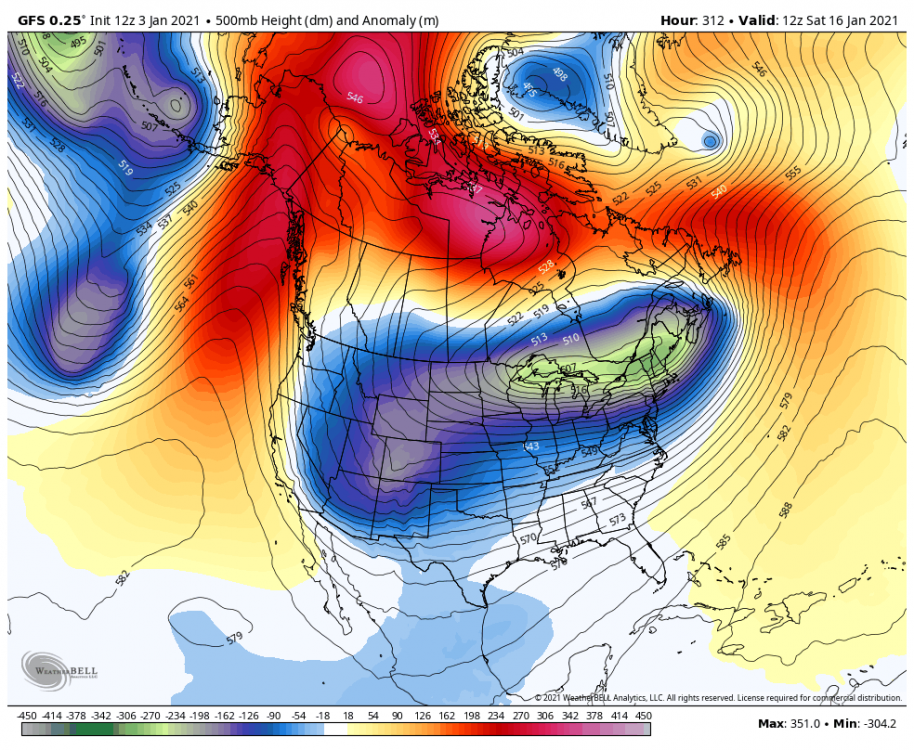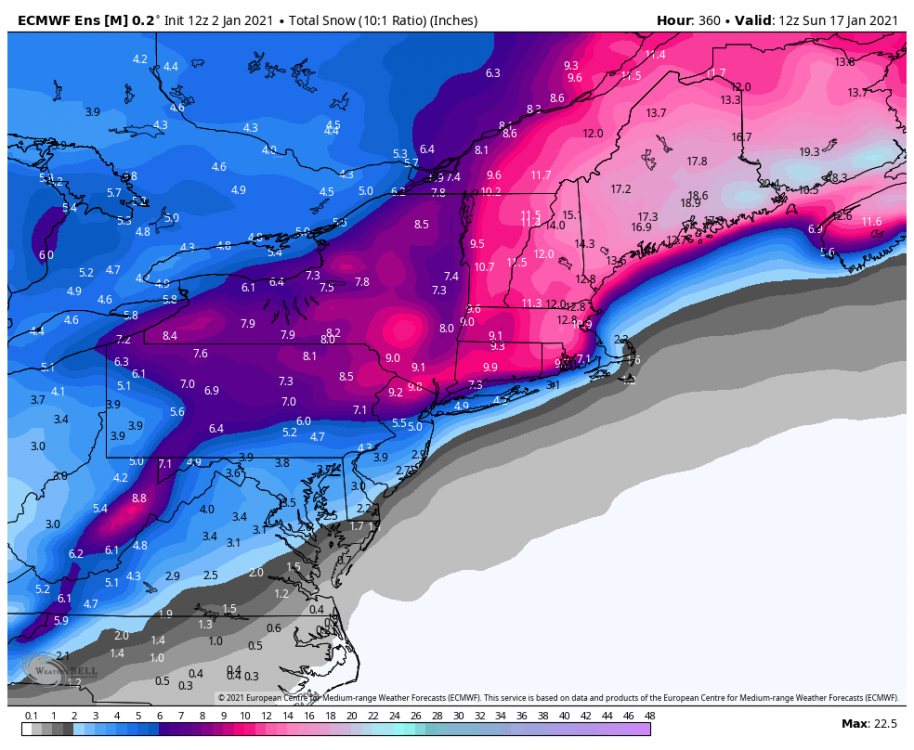
frd
Members-
Posts
6,847 -
Joined
-
Last visited
Content Type
Profiles
Blogs
Forums
American Weather
Media Demo
Store
Gallery
Everything posted by frd
-
Looks good for a - NAM state. Best look might be between the 16 th and 25 th initially. Beyond that more difficult to determine. @poolz1 @MattHugo81 Some talk that downwelling of any E'lies may not make it to the trop, that's always poss, especially when the strat doesn't split...but...don't forget we don't have dominant W'lies in the trop anyway that need reversing. The trop continues to be pre-conditioned for blocking IMO. 5:10 AM · Jan 5, 2021
-
I like over-running with nice cold air mass overhead
-
A weenies's therapist, I love it ! I personally feel happier reading that.
-
Yes that is true, the brunt of the arctic cold seems to gather in Eurasia. The site called stratobserve. Com has cool animations of everything related to SSWEs. It did change course recently and targets the other side of the pole with deep cold.
-
Yes very interesting. Also looking at where a split may occur and the progression from there. Still looking forward to a good period with Pac improvement and favorable longwave pattern.
-
Agreed but thought it interesting as many focused on that series of events in regards to the push of very warm air into Western NA .
-
Initially many thought this +EAMT event was going to be huge, but here HM posts something interesting to the contrary. @antmasiello · 44m Replying to @MJVentrice and @ScottSabolFOX8 So far, the EAMT hasn't been all that impressive BTW. The bulk of the pressure gradient has not been aligned properly for big spike. Regardless, the high itself was obviously very strong and had stratospheric impacts.
-
Who said that if you want snow in the Mid Atlantic everything needs to line up. Sure seems like that with this event, or non-event.
-
Wondering if at some point during the next eight weeks we get an event that was poorly modeled because the disturbance came from the Northern Jet and a data sparse region, some metal talked about that early in the season, just wondering if that might actually be the case down the road.
-
Thanks, time to let the pattern evolve, but It does look Meh..... However, I refuse to go to the dark side. Still waiting on the 6 inch mean for our area.
-
@CAPE. Can you post the 6z GEFS snow mean, I am hearing it went up, possibly in a significant manner.
-
After the 11/12 th the period near the 16 th has my interest. As you pointed out previously, the GEFS looks great and the Pac further improves. Analog guidance backs up the threat periods. I am ready for some snow !
-
Interesting read from Matt. So, basically a temporary relaxation of the Atlantic blocking due to changes in the AAM tendencies / subsequent fall in the AAM. Matt states this is only temporary, if it were to occur. It will be of interest to track.
-
Right at the cusp. .
-
Progressing nicely .
-
Yeah , looks good, but when, if ever, has the control made a trend change and the op and ensembles followed? Regardless, still have a ways to go on this one.
-
Wasn't it two years ago that a pv filament or extension suppressed a snowstorm to Virginia and North Carolina. We were originally thinking a foot around here. And that was pretty much it for the winter. A real bummer.
-
-
Exactly, very impressive to see the movement stop and head the other way. You have to think there might be some interesting changes in store for the medium range given the block.
-
Expect some bizarre solutions in the weeks ahead. Of course the models will be able to handle the physics. Nothing personal GFS.
-
It does, for one thing I share the same mean as psu ! To me that is a positive. And as I mentioned, the best potential may be after the 17 th , if so, we are not in range yet. Again, fun to look at, but only relevant when numbers go way up. meaning higher probability of a more significant event.
-
-
@psuhoffman Interesting..... @griteater Replying to @MattHugo81 Have you seen these tropical forcing charts referenced by @antmasiello the other day? Moves into Phase 7-8-1-2 type forcing from mid-Jan on 12:18 PM · Jan 2, 2021·Twitter Web App
-
That is typical and makes sense based on the history of prior events. Wondering once we pass Jan 5 th does modeling become a little clearer. Also, this recent post by HM is interesting. @antmasiello Replying to @antmasiello @griteater and @MattHugo81 So what this means is an increasing western hemisphere like response mid month becoming IO late month. That should propagate back to Maritimes for February. 12:31 PM · Jan 2, 2021




